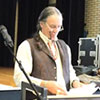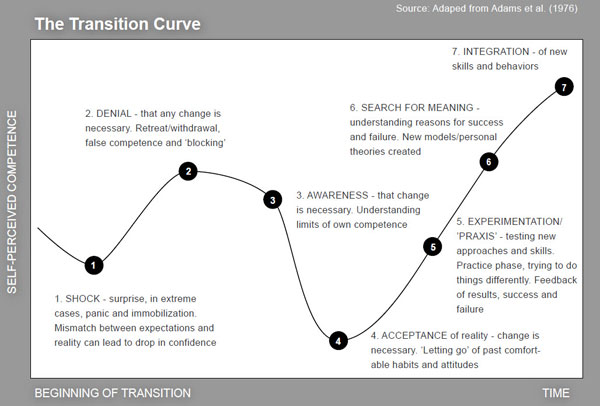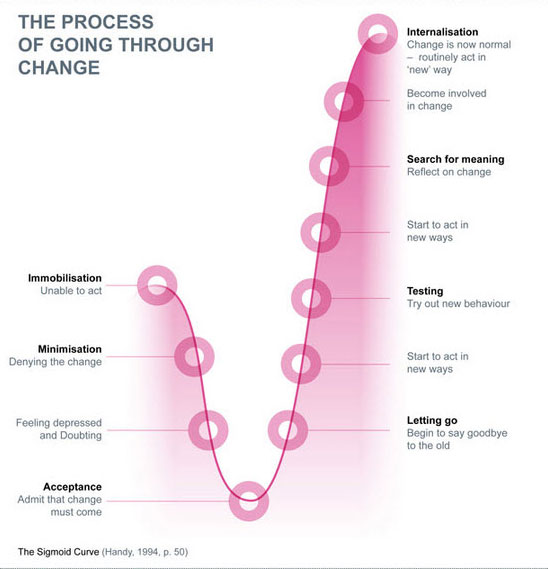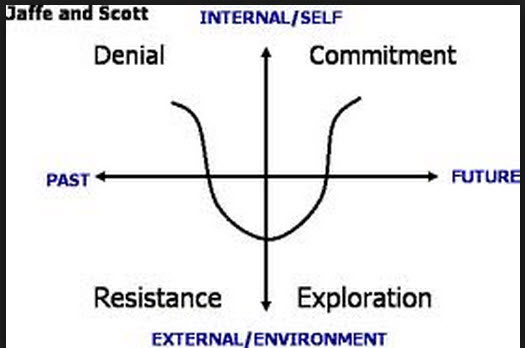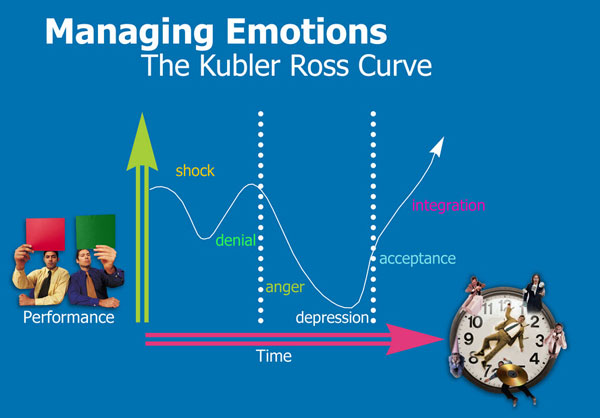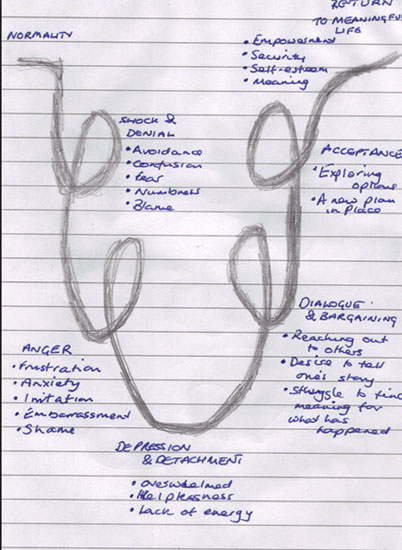

A book by Herb Stevenson, Volume 1. Learn more on Amazon.
Thoughts II:
The Next Step: A Calling

Volume 2 of 3. Learn more on Amazon.
Thoughts III:
Creating The Container

Volume 3 of 3. Learn more on Amazon.
To Lead
Read the article about training with Herb Stevenson in ALN Magazine.
See the article...
Team Development
We support the team and an organization's awareness, leading to greater communication and alignment. Our consultants are trained and certified in a unique range of proven shared experience methods to specifically address teams and organizations:
About Team Development
The executives we work with are extremely competent. With some, our focus is accelerating their development by rounding out some unforeseen flat sides. With others, it is changing conscious and unconscious behaviors that have limited their effectiveness by creating walls where roads should have been built.
Tuckman's Stages of Group Development
Bruce W Tuckman is a respected educational psychologist who first described the four stages of group development in 1965. Looking at the behavior of small groups in a variety of environments, he recognized the distinct phases they go through, and suggested they need to experience all four stages before they achieve maximum effectiveness. He refined and developed the model in 1977 (in conjunction with Mary Ann Jensen) with the addition of a fifth stage. Since then, others have attempted to adapt and extend the model.
FIVE STAGES OF GROUP DEVELOPMENT
Tuckman described the four distinct stages that a group can as it comes together and starts to operate. This process can be subconscious, although an understanding of the stages can help a group reach effectiveness more quickly and less painfully.
Stage 1: Forming
Forming Brief
Individual behavior is driven by a desire to be accepted by the others, and avoid controversy or conflict. Serious issues and feelings are avoided, and people focus on being busy with routines, such as team organization, who does what, when to meet, etc. But individuals are also gathering information and impressions - about each other, and about the scope of the task and how to approach it. This is a comfortable stage to be in, but the avoidance of conflict and threat means that not much actually.
In the Forming stage, personal relations are characterized by dependence. Group members rely on safe, patterned behavior and look to the group leader for guidance and direction. Group members have a desire for acceptance by the group and a need to be know that the group is safe. They set about gathering impressions and data about the similarities and differences among them and forming preferences for future subgrouping. Rules of behavior seem to be to keep things simple and to avoid controversy. Serious topics and feelings are avoided.
The major task functions also concern orientation. Members attempt to become oriented to the tasks as well as to one another. Discussion centers around defining the scope of the task, how to approach it, and similar concerns. To grow from this stage to the next, each member must relinquish the comfort of non-threatening topics and risk the possibility of conflict.
Team Development
The team meets and learns about the opportunity, challenges, agrees on goals and begin to tackle the tasks. Team members tend to still behave quite independently. They may be motivated, but are usually relatively uninformed of the real issues and objectives of the team. Team members are usually on their best behavior but very focused on self. Very mature, wise and healthy team members begin to model appropriate behavior even at this early phase. Sharing the knowledge of the concept of "Teams - Forming, Storming, Norming, Performing" is extremely helpful to the team.
Leaders and/or Supervisors of the team during this phase need to be directive.
Stage 2: Storming
Storming Brief
Individuals in the group can only remain nice to each other for so long, as important issues start to be addressed. Some people's patience will break early, and minor confrontations will arise that are quickly dealt with or glossed over. These may relate to the work of the group itself, or to roles and responsibilities within the group. Some will observe that it's good to be getting into the real issues, whilst others will wish to remain in the comfort and security of stage 1. Depending on the culture of the organization and individuals, the conflict will be more or less suppressed, but it'll be there, under the surface. To deal with the conflict, individuals may feel they are winning or losing battles, and will look for structural clarity and rules to prevent the conflict persisting.
The next stage, which Tuckman calls Storming, is characterized by competition and conflict. As the group members attempt to organize for the task, conflict inevitably results in their personal relations. Individuals have to bend and mold their feelings, ideas, attitudes, and beliefs to suit the group organization. Because of "fear of exposure" or "fear of failure," there will be an increased desire for structural clarification and commitment. Although conflicts may or may not surface as group issues, they do exist. Questions will arise about who is going to be responsible for what, what the rules are, what the reward system is, and what criteria for evaluation are. These reflect conflicts over leadership, structure, power, and authority. There may be wide swings in members' behavior based on emerging issues of competition and hostilities. Because of the discomfort generated during this stage, some members may remain completely silent while others attempt to dominate.
In order to progress to the next stage, group members must move from a "testing and proving" mentality to a problem-solving mentality. The most important trait in helping groups to move on to the next stage seems to be the ability to listen.
Team Development
Every group will then enter the storming stage in which different ideas compete for consideration. During this phase, the team addresses issues such as what problems they are really supposed to solve, how they will function independently and together and what leadership model they will accept. Team members open out to each other and confront each other ideas and perspectives.
In some cases, the storming stage can be resolved quickly. In others, the team never leaves this stage. The maturity level of several team members usually determines whether the team will ever move out of this stage. Immature team members will begin "acting out" to demonstrate how much they know and convince others that their ideas are correct. Some team members will focus on minutia to distract from the real issues.
The storming stage is necessary to the growth of the team. It can be contentious, unpleasant and even painful to members of the team who are averse to conflict. Tolerance of each team members and their differences needs to be emphasized. Without tolerance and patience the team will fail. This phase can become destructive to the team and will lower motivation if allowed to get out of control.
Leaders and/or Supervisors of the team during this phase may be more accessible but tend to still need to be directive in their guidance of the decision-making process and professional behavior.
Stage 3: Norming
Norming Brief
In Tuckman's Norming stage, interpersonal relations are characterized by cohesion. Group members are engaged in active acknowledgment of all members' contributions, community building and maintenance, and solving of group issues. Members are willing to change their preconceived ideas or opinions on the basis of facts presented by other members, and they actively ask questions of one another. Leadership is shared, and cliques dissolve. When members begin to know-and identify with-one another, the level of trust in their personal relations contributes to the development of group cohesion. It is during this stage of development (assuming the group gets this far) that people begin to experience a sense of group belonging and a feeling of relief as a result of resolving interpersonal conflicts.
As Stage 2 evolves, the "rules of engagement" for the group become established, and the scope of the group's tasks or responsibilities are clear and agreed. Having had their arguments, they now understand each other better, and can appreciate each other's skills and experience. Individuals listen to each other, appreciate and support each other, and are prepared to change pre-conceived views: they feel they're part of a cohesive, effective group. However, individuals have had to work hard to attain this stage, and may resist any pressure to change - especially from the outside - for fear that the group will break up, or revert to a storm.
The major task function of stage three is the data flow between group members: They share feelings and ideas, solicit and give feedback to one another, and explore actions related to the task. Creativity is high. If this stage of data flow and cohesion is attained by the group members, their interactions are characterized by openness and sharing of information on both a personal and task level. They feel good about being part of an effective group.
The major drawback of the norming stage is that members may begin to fear the inevitable future breakup of the group; they may resist change of any sort.
Team Development
At some point, the team will hopefully enter the norming stage. During this phase, team members adjust their behaviors to each other as they develop work habits that make the teamwork seem more natural and fluid. Team members often work through this stage by agreeing on rules, values, professional behavior, shared methods, working tools and even taboos. During this phase, team members begin to trust each other. Motivation increases as the team gets more acquainted with the project.
Teams in this phase may lose their creative edge if the norming behaviors become too strong and begin to stifle healthy dissent and the team begins to exhibit groupthink. Leaders and/or Supervisors of the team during this phase tend to be more participative than in the earlier stages. The team members themselves can be expected to take more responsibility for making decisions and for their professional behavior.
Stage 4: Performing
Performing Brief
Not all groups reach this stage, characterized by a state of interdependence and flexibility. Everyone knows each other well enough to be able to work together, and trusts each other enough to allow independent activity. Roles and responsibilities change according to need in an almost seamless way. Group identity, loyalty and morale are all high, and everyone is equally task-orientated and peopleorientated. This high degree of comfort means that all the energy of the group can be directed towards the task(s) in hand.
The Performing stage is not reached by all groups. If group members are able to evolve to stage four, their capacity, range, and depth of personal relations expand to true interdependence. In this stage, people can work independently, in subgroups, or as a total unit with equal facility. Their roles and authorities dynamically adjust to the changing needs of the group and individuals. Stage four is marked by interdependence in personal relations and problem solving in the realm of task functions. By now, the group should be most productive. Individual members have become self-assuring, and the need for group approval is past. Members are both highly task oriented and highly people oriented. There is unity: group identity is complete, group morale is high, and group loyalty is intense. The task function becomes genuine problem solving, leading toward optimal solutions and optimum group development. There is support for experimentation in solving problems and an emphasis on achievement. The overall goal is productivity through problem solving and work.
Team Development
Some teams will reach the performing stage. These high-performing teams are able to function as a unit as they find ways to get the job done smoothly and effectively without inappropriate conflict or the need for external supervision. Team members have become interdependent. By this time they are motivated and knowledgeable. The team members are now competent, autonomous and able to handle the decision-making process without supervision. Dissent is expected and allowed as long as it is channeled through means acceptable to the team.
Leaders and/or Supervisors of the team during this phase are almost always participative. The team itself will make most of the necessary decisions.
Even the most high-performing teams will revert to earlier stages in certain circumstances. Many long-standing teams will go through these cycles many times as they react to changing circumstances. For example, a change in leadership may cause the team to revert to storming as the new people challenge the existing norms and dynamics of the team.
THE FIFTH STAGE
Twelve years after first describing the four stages, in 1977 Bruce Tuckman revisited his original work and described a fifth stage: Adjourning
Stage 5: Adjourning
Adjourning, Deforming, Mourning, & Transforming
This is about completion and disengagement, both from the tasks and the group members. Individuals will be proud of having achieved much and glad to have been part of such an enjoyable group. They need to recognize what they've done, and consciously move on. Some authors describe stage 5 as "Deforming and Mourning", recognizing the sense of loss felt by group members.
Tuckman's final stage, Adjourning, involves the termination of task behaviors and disengagement from relationships. It is a form of closure. A planned conclusion usually includes recognition for participation and achievement and an opportunity for members to say personal goodbyes. Concluding a group can create some apprehension - in effect, a minor crisis. The termination of the group is a regressive movement from giving up control to giving up inclusion in the group. The most effective interventions in this stage are those that facilitate task termination and the disengagement process.
Team Development
Adjourning involves completing the task and breaking up the team. Others call it the phase for mourning. Mourning is a natural process whereby there is clear existential recognition that the task is completed, and the group no longer needs to exist. A team that manages to remain together may transcend to a transforming phase of achievement. Transformational management can produce major changes in performance through team synergy and is considered to be more far-reaching than transactional management.
DYNAMICS OF THE FIVE STAGES
Tuckman's original work simply described the way he had observed groups evolve, whether they were conscious of it or not. But for us the real value is in recognizing where a group is in the process, and helping it to move to the Perform stage. Groups are often forming and changing, and each time that happens, they can move to a different Tuckman Stage. A group might be happily Norming or Performing, but a new member might force them back into Storming. Seasoned leaders will be ready for this, and will help the group get back to Performing as quickly as possible.
Many work groups live in the comfort of Norming, and are fearful of moving back into Storming, or forward into Performing. This will govern their behavior towards each other, and especially their reaction to change.
PDF Charts:
- Key Attributes Team Development
- Tuckman's Team Building and Leadership Skills
Adapted from:
Beyerlein, Michael M., Douglas A,. Johnson, Susan T. Beyerlein, (1996) Advances in Interdisciplinary Studies of Work Teams: Team Leadership. Emerald., Volume 3.
Schwarz, Roger, (2013) Smart Leaders Smarter Teams: How You and Your Team Get Unstuck and Get Results. San Francisco: Jossey-Bass
Tuckman, B. (1965) Developmental Sequence in Small Groups. Psychological Bulletin, 63, 384-399.
Tuckman, B. & Jensen, M. (1977) Stages of Small Group Development. Group and Organizational Studies, 2, 419-427.

